Although the constant development of new vaccines has reduced risks of childhood diseases, there are still several that remain. Some are very common childhood illnesses which happen often like strep throat or colds, but some are hit and miss, appearing rarely such as hand-foot-mouth disease. In any case, it is important to know the signs and symptoms so proper medical treatment can be received.
11 Common Childhood Illnesses
1. Strep Throat
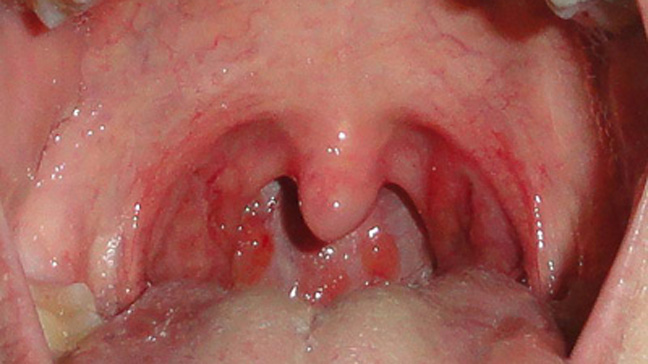 Strep throat is a bacterial infection that primarily affects older children. Infants and toddlers rarely get it but are more susceptible if an older sibling is infected. The main symptoms include severe throat pain, trouble swallowing, fever and swollen lymph nodes.
Strep throat is a bacterial infection that primarily affects older children. Infants and toddlers rarely get it but are more susceptible if an older sibling is infected. The main symptoms include severe throat pain, trouble swallowing, fever and swollen lymph nodes.
A doctor usually diagnoses strep throat by a throat culture and/or the appearance of white spots on the back of the throat. The treatment is prescribed antibiotics and a child is contagious until 24 hours after the first does is taken.
2. Pinkeye
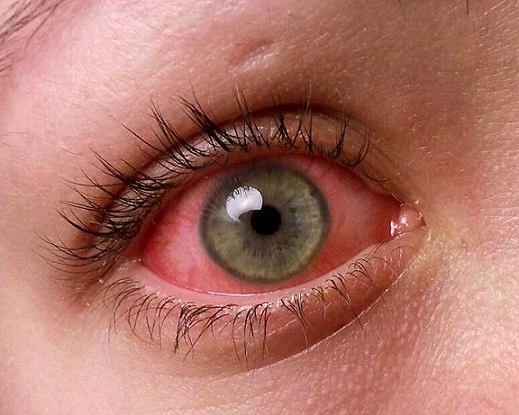 Pinkeye can affect children of any age, including infants. It can be caused by either bacteria or virus. The main symptoms of pinkeye, also known as conjunctivitis, are red eyes, yellow discharge and crusted eyes. It can also cause blurred vision.
Pinkeye can affect children of any age, including infants. It can be caused by either bacteria or virus. The main symptoms of pinkeye, also known as conjunctivitis, are red eyes, yellow discharge and crusted eyes. It can also cause blurred vision.
Most of the time, this illness is caused by a bacterial strain and must be treated by prescribed antibiotic eye drops or eye ointment. This is usually the case in younger children who have a hard time remembering to wash their hands and often touch their face. This is a highly contagious disease and a child should not go to school until 24 hours after the first dose of medication.
3. Common Cold
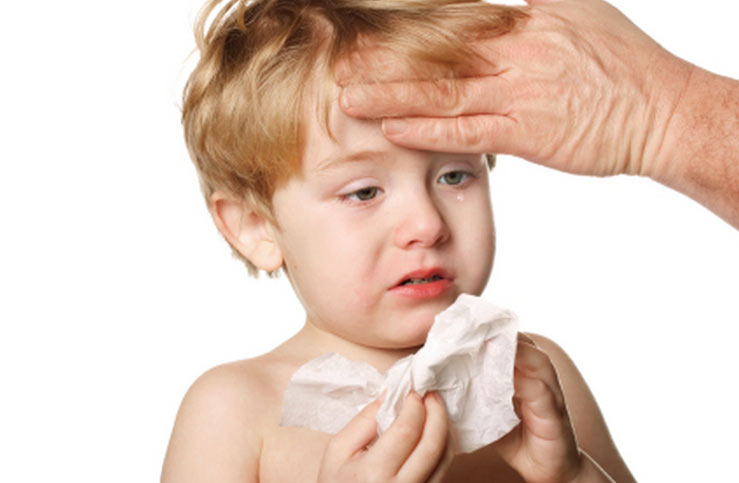 A cold is one of the most common childhood illnesses. Most children can expect to get four or five colds a year. Children of any age are affected, but daycare or school age children seem to be more susceptible. Symptoms of a common cold include congestion, cough, mild fever, runny nose and sore throat.
A cold is one of the most common childhood illnesses. Most children can expect to get four or five colds a year. Children of any age are affected, but daycare or school age children seem to be more susceptible. Symptoms of a common cold include congestion, cough, mild fever, runny nose and sore throat.
Physicians now recommend avoiding cold and cough medications and stick with saline nasal sprays. Children's acetaminophen or ibuprofen can be given if a child is experiencing discomfort due to the illness, but make sure to follow dosing instructions.
4. Respiratory Syncytial Virus (RSV)
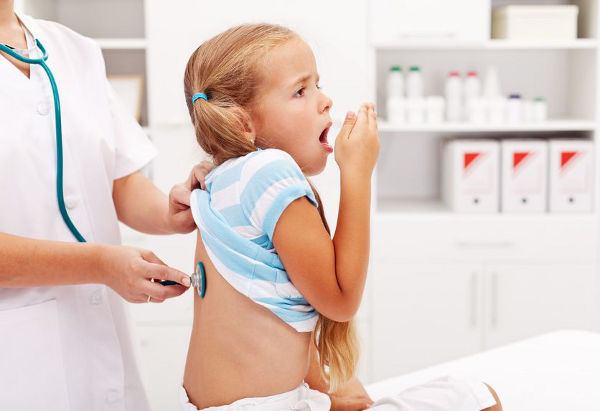 RSV can be one of the most dangerous common childhood illnesses. This is especially so in the cases of young children whose immune systems have not fully developed. This virus causes an infection in the airways and if serious, can cause pneumonia.
RSV can be one of the most dangerous common childhood illnesses. This is especially so in the cases of young children whose immune systems have not fully developed. This virus causes an infection in the airways and if serious, can cause pneumonia.
Most of the time, the symptoms include nasal congestion, a runny nose and cough. However, in infants it can lead to breathing problems. Sometimes young babies have to be hospitalized to control the symptoms. It is important to see your pediatrician about medications that may help prevent RSV or if infected, will ease your child's discomfort.
5. Croup
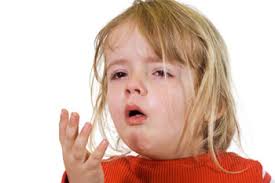 Croup is usually caused by an infection of the respiratory system and is most commonly caused by a virus. It is accompanied by a distinctive bark-like cough. Infants and young children are more susceptible to croup. In addition to the cough, other symptoms include a fever, runny nose and congestion.
Croup is usually caused by an infection of the respiratory system and is most commonly caused by a virus. It is accompanied by a distinctive bark-like cough. Infants and young children are more susceptible to croup. In addition to the cough, other symptoms include a fever, runny nose and congestion.
A croup cough will often get worse at night and the best remedy is humidity. You can sit with your child in a bathroom steamed by a hot shower or use a cool mist humidifier. The moisture in the air will help open your child's airways. Sometimes, your doctor will prescribe steroids or other breathing treatments. Monitor your child's breathing and call 911 if you are concerned.
6. Whooping Cough (Pertussis)
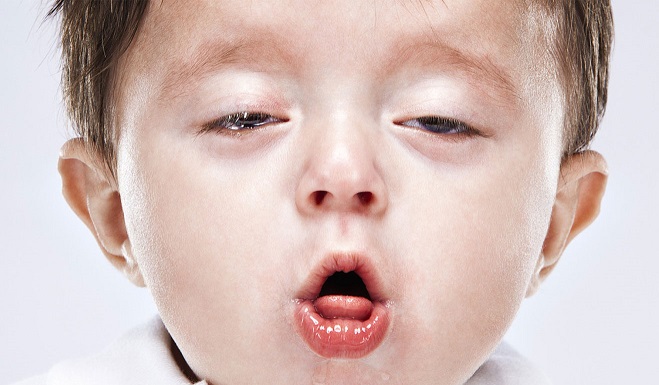 Anyone at any age can get whooping cough, but if a baby catches it, there is a greater chance of it becoming serious. Due to this, infants are often hospitalized so they can be monitored. Because it is a bacterial infection of the respiratory system and lungs, symptoms initially mimic a cold. An infected person may have a runny nose, congestion and cough. But as the illness progresses, especially in a child, the cough will get worse. The name whooping cough comes from the noise made when the infected person gasps for air. Antibiotics can help, but the best medicine is prevention via vaccines.
Anyone at any age can get whooping cough, but if a baby catches it, there is a greater chance of it becoming serious. Due to this, infants are often hospitalized so they can be monitored. Because it is a bacterial infection of the respiratory system and lungs, symptoms initially mimic a cold. An infected person may have a runny nose, congestion and cough. But as the illness progresses, especially in a child, the cough will get worse. The name whooping cough comes from the noise made when the infected person gasps for air. Antibiotics can help, but the best medicine is prevention via vaccines.
7. Fifth Disease
 Fifth disease is a viral infection and is one of the common childhood illnesses. It usually affects children as young as 5 and as old as 15. Most of the time, the virus will run its course and go away on its own. In rare cases, especially when someone has a weakened immune system, a person may become seriously ill. The initial symptoms include a low grade fever, swollen joints and cold symptoms. Shortly after, a red rash will form on the child's face and slowly make its way down the torso, arms and legs. Although the rash may last up to three weeks, when it appears the child is no longer contagious. Your doctor can recommend medications for itching and joint pain.
Fifth disease is a viral infection and is one of the common childhood illnesses. It usually affects children as young as 5 and as old as 15. Most of the time, the virus will run its course and go away on its own. In rare cases, especially when someone has a weakened immune system, a person may become seriously ill. The initial symptoms include a low grade fever, swollen joints and cold symptoms. Shortly after, a red rash will form on the child's face and slowly make its way down the torso, arms and legs. Although the rash may last up to three weeks, when it appears the child is no longer contagious. Your doctor can recommend medications for itching and joint pain.
8. Hay Fever
 Hay fever is an allergic reaction due to an allergen that affects your nose and eyes. Children of all ages can be affected but it usually does not appear until the toddler years. Depending on severity of the reaction, symptoms can include sneezing, itchy eyes, runny nose and watery eyes. If the hay fever is caused by pollen from grass or flowers, a child will experience worse symptoms in spring and summer. If a child has hay fever year round, it may be caused by pet dander or dust mites. In severe cases, your doctor may order allergen tests. There are several medications that may help relieve symptoms.
Hay fever is an allergic reaction due to an allergen that affects your nose and eyes. Children of all ages can be affected but it usually does not appear until the toddler years. Depending on severity of the reaction, symptoms can include sneezing, itchy eyes, runny nose and watery eyes. If the hay fever is caused by pollen from grass or flowers, a child will experience worse symptoms in spring and summer. If a child has hay fever year round, it may be caused by pet dander or dust mites. In severe cases, your doctor may order allergen tests. There are several medications that may help relieve symptoms.
9. Roseola
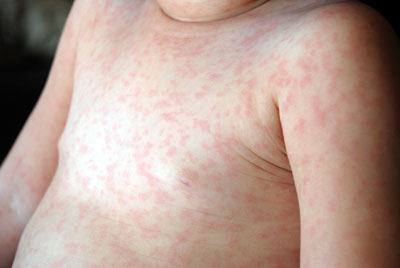 If a child is going to get roseola, it will happen anytime between infancy and kindergarten, but almost never any time after that. It is a viral infection that causes a rash, but sometimes it is so mild you won't even know it is happening. In other cases, a child may develop a high fever, coughing and congestion, followed by a rash that develops on the chest and then spreads. It usually takes about a week for roseola to run its course and there is no need for medication unless it is to control the fever or provide comfort for the rash. It is important to contact your pediatrician if you cannot control the fever or symptoms worsen. It is highly contagious until the rash goes away, so keep your child home from daycare or school until it clears up.
If a child is going to get roseola, it will happen anytime between infancy and kindergarten, but almost never any time after that. It is a viral infection that causes a rash, but sometimes it is so mild you won't even know it is happening. In other cases, a child may develop a high fever, coughing and congestion, followed by a rash that develops on the chest and then spreads. It usually takes about a week for roseola to run its course and there is no need for medication unless it is to control the fever or provide comfort for the rash. It is important to contact your pediatrician if you cannot control the fever or symptoms worsen. It is highly contagious until the rash goes away, so keep your child home from daycare or school until it clears up.
10. Eczema
 Eczema is a skin condition that can affect any child at any age, from infancy to adolescents and even into adulthood. This illness is considered an allergic reaction and symptoms include a rash and itchy area on the skin. It can give the appearance of being "scaly". Sometimes it is hard to diagnose the cause of eczema, one of the common childhood illnesses. It can be triggered by a dietary reaction, hereditary factors, stress, or a pet, chemical or dust allergy. Your doctor can recommend different forms of treatments and ways to ease the itch that may accompany the rash.
Eczema is a skin condition that can affect any child at any age, from infancy to adolescents and even into adulthood. This illness is considered an allergic reaction and symptoms include a rash and itchy area on the skin. It can give the appearance of being "scaly". Sometimes it is hard to diagnose the cause of eczema, one of the common childhood illnesses. It can be triggered by a dietary reaction, hereditary factors, stress, or a pet, chemical or dust allergy. Your doctor can recommend different forms of treatments and ways to ease the itch that may accompany the rash.
11. Hand-Foot-Mouth Disease (Coxsackievirus)
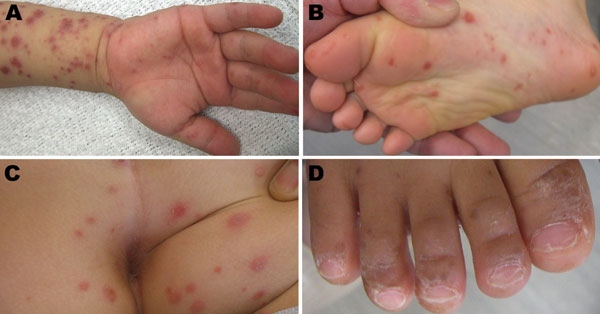 The disease gets its name from the sores that appear in the mouth and throat and the blisters that appear on the hands and feet. School age children are most susceptible as they are exposed to other kids who sneeze or cough with no regard to cover their nose or mouths or wash their hands. It can also be passed by fecal matter, so washing hands after using the bathroom is very important. The virus lasts about a week and can also cause a child to feel achy. Children's acetaminophen or ibuprofen can assist with discomfort. For throat pain, cold water or popsicles can help. It is important to make sure your child is drinking enough fluids and not avoiding it due to throat pain. You do not want him or her to become dehydrated.
The disease gets its name from the sores that appear in the mouth and throat and the blisters that appear on the hands and feet. School age children are most susceptible as they are exposed to other kids who sneeze or cough with no regard to cover their nose or mouths or wash their hands. It can also be passed by fecal matter, so washing hands after using the bathroom is very important. The virus lasts about a week and can also cause a child to feel achy. Children's acetaminophen or ibuprofen can assist with discomfort. For throat pain, cold water or popsicles can help. It is important to make sure your child is drinking enough fluids and not avoiding it due to throat pain. You do not want him or her to become dehydrated.
